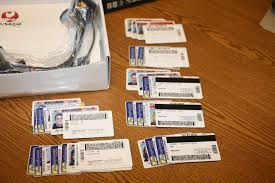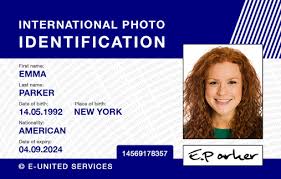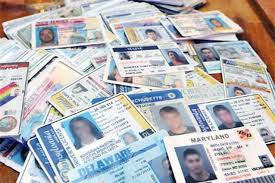Buy Scannable Harrisburg Fake IDs
Outline
- Introduction
- H1: What is a Scannable Fake ID?
- H2: Why Harrisburg Fake IDs Are Popular
- Understanding Scannable Harrisburg Fake IDs
- H2: Definition and Features of a Scannable Fake ID
- H3: Difference Between Scannable and Non-Scannable IDs
- H3: The Technology Behind Scannable Fake IDs
- The Popularity of Harrisburg Fake IDs
- H2: Why Choose Harrisburg?
- H3: Accessibility and Local Demand
- H3: Reputation of Harrisburg IDs
- Legal Implications of Using a Fake ID
- H2: Risks of Using a Fake ID
- H3: Legal Consequences in Pennsylvania
- H3: The Impact on Your Future
- How to Buy a Scannable Harrisburg Fake ID
- H2: What to Look for in a Reliable Vendor
- H3: Online vs. Local Vendors
- H3: Red Flags to Avoid
- H3: Ensuring the ID is Truly Scannable
- How Scannable Fake IDs are Made
- H2: The Production Process
- H3: Materials Used in Fake ID Production
- H3: Security Features That Make Them Scannable
- Safety Tips When Using a Scannable Fake ID
- H2: How to Use Your Fake ID Safely
- H3: Avoiding Suspicion and Detection
- H3: What to Do if You're Caught
- Cost of Scannable Harrisburg Fake IDs
- H2: Factors Affecting the Price
- H3: Average Cost of a Quality Fake ID
- H3: Why Cheaper Isn’t Always Better
- Alternatives to Buying a Fake ID
- H2: Exploring Legal Alternatives
- H3: Wait Until You’re 21
- H3: Consider Fake ID Alternatives
The Future of Scannable Fake IDs
- H2: Advancements in Fake ID Technology
- H3: How Authorities are Cracking Down
- H3: The Future Legal Landscape
Conclusion
- H2: Is Buying a Scannable Harrisburg Fake ID Worth It?
- H3: Weighing the Risks vs. Rewards
FAQs
- H2: Frequently Asked Questions
- H3: How reliable are Harrisburg fake IDs?
- H3: Can a scannable fake ID be detected?
- H3: What happens if my fake ID gets confiscated?
- H3: Are there any legal ways to obtain a fake ID?
- H3: Is it safe to buy fake IDs online?
Buy Scannable Harrisburg Fake IDs
Introduction
In today’s world, where age restrictions often limit access to certain privileges, the demand for fake IDs has surged, particularly among young adults. A scannable Harrisburg fake ID is one of the most sought-after counterfeit documents, promising authenticity and ease of use. But what exactly are these IDs, and why are they so popular? Let’s dive into the world of scannable Harrisburg fake IDs, uncovering everything from their creation to their legal ramifications.

What is a Scannable Fake ID?
A scannable fake ID is not your ordinary counterfeit identification. Unlike traditional fake IDs that might fool a bouncer or bartender with just a glance, scannable IDs are designed to pass through electronic scanners and validation systems. These IDs replicate not just the physical appearance of a legitimate ID but also the data embedded within the magnetic stripe or barcode, making them much more convincing and difficult to detect.
Why Harrisburg Fake IDs Are Popular
Harrisburg, Pennsylvania’s capital, has gained a reputation for producing high-quality fake IDs. The city's strategic location, combined with a thriving student population and nightlife, has made it a hub for fake ID production and distribution. But there’s more to Harrisburg’s fame than just geography. Let’s explore why these fake IDs are so coveted.
Understanding Scannable Harrisburg Fake IDs
Definition and Features of a Scannable Fake ID
A scannable Harrisburg fake ID is a counterfeit identification card that mimics a genuine ID in every aspect. These IDs are designed to be indistinguishable from real IDs, not just to the naked eye but also when scanned by an electronic device. The embedded data, such as name, date of birth, and ID number, matches the printed details, making it pass off as legitimate even when scrutinized.
Difference Between Scannable and Non-Scannable IDs
The primary distinction between scannable and non-scannable fake IDs lies in their functionality. Non-scannable IDs might look convincing but often fail when subjected to electronic verification. Scannable IDs, on the other hand, are encoded with data that can be read by scanning devices, making them far more reliable in situations where IDs are checked rigorously.
The Technology Behind Scannable Fake IDs
The technology involved in creating scannable fake IDs is sophisticated. It involves encoding magnetic stripes or barcodes with accurate data, which matches the details on the card. High-quality printers and specific materials that mimic the texture and appearance of real IDs are used. Some counterfeiters even go as far as embedding holograms and UV features to make the IDs appear more authentic under different lighting conditions.
The Popularity of Harrisburg Fake IDs
Why Choose Harrisburg?
Harrisburg stands out as a preferred source for fake IDs due to several factors. The city has a well-established network of vendors who specialize in high-quality forgeries. Moreover, its proximity to major universities and colleges makes it a hotspot for students seeking to bypass age restrictions.
Accessibility and Local Demand
The ease of obtaining a fake ID in Harrisburg contributes to its popularity. Local demand, driven by the city’s vibrant nightlife and student population, ensures that the market for fake IDs remains robust. Vendors in the area are well-versed in the latest ID verification technologies, ensuring that their products stay ahead of law enforcement efforts to crack down on counterfeiting.
Reputation of Harrisburg IDs
Harrisburg fake IDs have earned a reputation for being some of the most reliable and scannable in the country. The meticulous attention to detail in their production, coupled with the use of advanced technology, makes them highly sought after. Whether it’s for underage entry into bars or purchasing alcohol, Harrisburg IDs are considered a safe bet by many.
Legal Implications of Using a Fake ID
Risks of Using a Fake ID
Using a fake ID comes with significant risks, especially if it’s scannable. The legal consequences can be severe, ranging from fines to imprisonment, depending on the jurisdiction. Even if you manage to fool the bouncer or bartender, there’s always the chance of your ID being flagged during a more rigorous check.
Legal Consequences in Pennsylvania
In Pennsylvania, the penalties for using a fake ID are stringent. If caught, you could face misdemeanor charges, which might include hefty fines, community service, or even jail time. Additionally, having a criminal record for using a fake ID can have long-lasting effects, potentially hindering future employment opportunities and other aspects of life.
The Impact on Your Future
The repercussions of using a fake ID extend beyond immediate legal troubles. A criminal record can have a profound impact on your future, affecting everything from job prospects to college applications. It’s essential to weigh these risks against the short-term benefits of possessing a fake ID.
How to Buy a Scannable Harrisburg Fake ID
What to Look for in a Reliable Vendor
If you’re considering purchasing a fake ID, finding a reliable vendor is crucial. Look for vendors with a proven track record, positive reviews, and transparency in their operations. Avoid those who require upfront payments without providing any guarantees.
Online vs. Local Vendors
Both online and local vendors offer fake IDs, but each comes with its own set of advantages and disadvantages. Online vendors might offer convenience and anonymity, but the risk of scams is higher. Local vendors, on the other hand, may offer more personalized service and the ability to inspect the product before purchase.
Red Flags to Avoid
When searching for a vendor, be wary of certain red flags. Unrealistically low prices, lack of communication, and absence of customer reviews are all warning signs. Ensure that the vendor you choose is known for producing IDs that are not just visually convincing but also scannable.
Ensuring the ID is Truly Scannable
Not all fake IDs are created equal. To ensure your ID is scannable, check for reviews from previous buyers, and if possible, test the ID yourself in a low-risk situation. Scannable IDs should pass through scanners without any issues, so it’s crucial to verify this before relying on it in a critical situation.
How Scannable Fake IDs are Made
The Production Process
The creation of a scannable fake ID involves several steps, from designing the template to encoding the necessary data. Skilled counterfeiters use high-quality printers, specialized inks, and authentic-looking templates to produce these IDs. The process also includes encoding magnetic stripes or barcodes with data that matches the printed information.
Materials Used in Fake ID Production
Quality fake IDs are made using materials similar to those used in genuine IDs. This includes PVC plastic, which gives the ID the right thickness and flexibility, as well as holographic overlays and UV inks that add to the authenticity. These materials are crucial in making the ID not only look real but also feel real.
Security Features That Make Them Scannable
To make a fake ID scannable, certain security features are incorporated during production. This might include holograms, UV light features, and microprinting, all of which contribute to the ID’s legitimacy when scanned. The inclusion of these features requires specialized equipment and knowledge, making high-quality fake IDs a product of skilled craftsmanship.
Safety Tips When Using a Scannable Fake ID
How to Use Your Fake ID Safely
Using a fake ID requires caution. Always be aware of your surroundings and the potential risks. Avoid using your fake ID in places where scrutiny is likely to be high, such as large events or strict establishments. Additionally, ensure your behavior aligns with the age on your ID to avoid raising suspicion.
Avoiding Suspicion and Detection
To avoid detection, it’s essential to act naturally and confidently when presenting your fake ID. Nervousness or over-explaining can draw unwanted attention. It’s also wise to use the ID in environments where you’re less likely to be closely examined, such as local bars rather than high-profile clubs.
What to Do if You're Caught
If you’re caught using a fake ID, the best course of action is to remain calm and cooperative. Avoid making the situation worse by arguing or attempting to flee. Depending on the circumstances, you might be able to resolve the situation with a warning, but if legal action is taken, it’s advisable to seek legal counsel immediately.
Cost of Scannable Harrisburg Fake IDs
Factors Affecting the Price
The cost of a scannable Harrisburg fake ID can vary widely based on several factors, including the quality of the materials used, the complexity of the security features, and the reputation of the vendor. IDs that are more realistic and include features like holograms and UV elements tend to be more expensive.
Average Cost of a Quality Fake ID
On average, a high-quality scannable fake ID can cost anywhere from $100 to $300. While this might seem steep, remember that you’re paying for a product designed to pass through electronic scanners and withstand scrutiny. It’s an investment in the level of authenticity you require.
Why Cheaper Isn’t Always Better
While it might be tempting to opt for a cheaper fake ID, this often comes at the cost of quality. Lower-priced IDs might lack the necessary security features, making them easier to detect. In the world of fake IDs, you often get what you pay for, so it’s worth spending a bit more for peace of mind.
Alternatives to Buying a Fake ID
Exploring Legal Alternatives
Instead of risking the use of a fake ID, consider legal alternatives. For instance, if you’re underage and looking to experience nightlife, some venues offer 18+ events where alcohol isn’t served. This allows you to enjoy a social environment without the legal risks.
Wait Until You’re 21
Patience can be a virtue when it comes to age-restricted activities. Waiting until you’re 21 to legally drink or enter certain establishments might not be the most exciting option, but it’s the safest. Once you’re of legal age, you can enjoy these activities without any fear of legal repercussions.
Consider Fake ID Alternatives
If you’re looking for other ways to bypass age restrictions, consider options like getting involved in non-alcoholic social events or using a friend’s legitimate ID with their permission, though the latter also carries risks. There are always alternatives that don’t involve breaking the law.
The Future of Scannable Fake IDs
Advancements in Fake ID Technology
As technology continues to advance, so too does the sophistication of fake IDs. Future fake IDs are likely to incorporate even more advanced features, making them harder to detect. However, this also means that law enforcement and ID verification technologies will continue to evolve, creating an ongoing cat-and-mouse game.
How Authorities are Cracking Down
Law enforcement agencies are constantly improving their methods for detecting fake IDs. From enhanced scanning technology to better training for staff, authorities are becoming more adept at identifying counterfeit documents. This has led to an increase in fake ID confiscations and legal actions.
The Future Legal Landscape
The legal landscape surrounding fake IDs is also likely to evolve. As the use of fake IDs becomes more prevalent, we might see stricter penalties and more aggressive enforcement efforts. It’s crucial to stay informed about these changes, as the risks of using a fake ID may increase over time.
Conclusion
Is Buying a Scannable Harrisburg Fake ID Worth It?
When considering whether to buy a scannable Harrisburg fake ID, it’s essential to weigh the potential benefits against the substantial risks. While a fake ID might offer temporary access to certain activities, the legal and personal repercussions can be long-lasting. The decision ultimately comes down to your willingness to accept these risks and the potential impact on your future.
FAQs
How reliable are Harrisburg fake IDs?
Harrisburg fake IDs are known for their reliability, especially when it comes to passing through scanners. However, no fake ID is foolproof, and there’s always a risk of detection.
Can a scannable fake ID be detected?
Yes, scannable fake IDs can be detected, especially if the scanner is advanced or if the ID’s data doesn’t perfectly match the visual details. Properly encoded and produced IDs have a higher chance of passing undetected.
What happens if my fake ID gets confiscated?
If your fake ID is confiscated, you could face legal consequences, including fines or even criminal charges. The severity of the punishment depends on local laws and the circumstances of the confiscation.
Are there any legal ways to obtain a fake ID?
No, obtaining a fake ID is illegal in all jurisdictions. Any method of obtaining a fake ID, whether online or through local vendors, involves breaking the law.
Is it safe to buy fake IDs online?
Buying fake IDs online carries significant risks, including scams, legal repercussions, and receiving a low-quality product. It’s crucial to research thoroughly if you choose this route, though it’s safer to avoid it altogether.
This article provides a comprehensive look at scannable Harrisburg fake IDs, offering insights into their production, use, and the associated risks. Whether you’re considering purchasing one or just curious about the topic, understanding the full picture is key to making informed decisions.
 scannable Fake South Carolina
scannable Fake South Carolina
 scannable Fake Missouri DL
scannable Fake Missouri DL
 scannable Fake RhodeIsland DL
scannable Fake RhodeIsland DL
 scannable Fake Ohio DL
scannable Fake Ohio DL